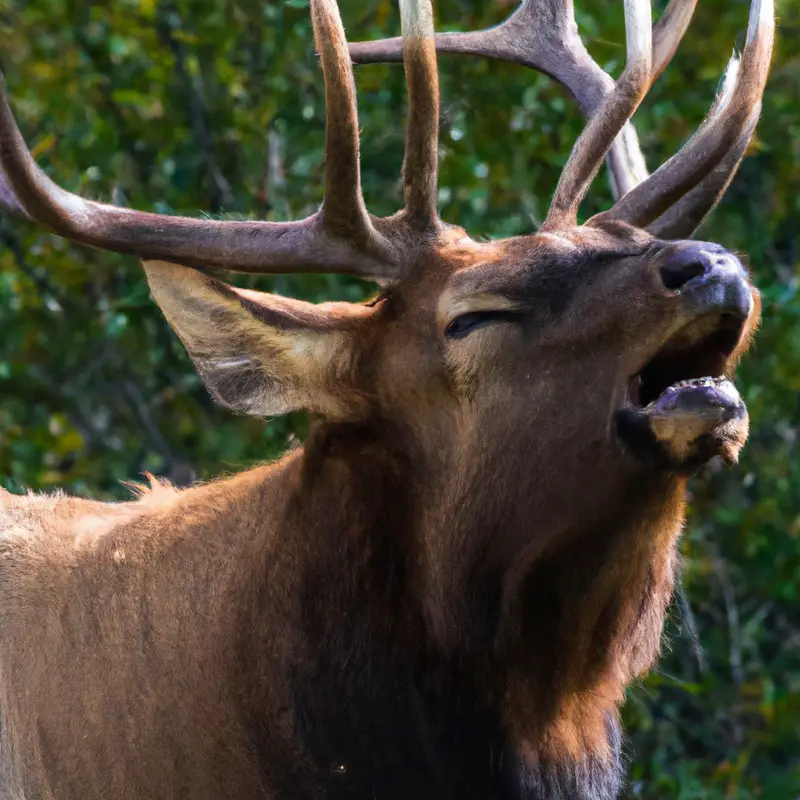Key Takeaways:
- Hunting elk is a popular pastime in Arizona due to the state’s diverse elk population and extensive hunting opportunities.
- Arizona offers a range of hunting seasons and methods for elk, including archery, rifle, and muzzleloader hunts.
- Successful elk hunting in Arizona often requires careful planning, knowledge of elk behavior, and physical endurance.
- Hunters in Arizona need to be aware of hunting regulations and obtain the necessary licenses and permits before planning their elk hunting trip.
Have you ever dreamt of embarking on an adrenaline-fueled adventure in the picturesque landscapes of Arizona? Well, I’ve got just the thing for you: elk hunting.
Picture yourself stalking through the wilderness, anticipating the majestic sight of a bull elk.
In this blog, I’ll be your guide, sharing my expertise on everything you need to know about hunting elk in Arizona. From regulations and requirements to planning your trip, techniques, safety tips, and even the ethics and conservation efforts surrounding this thrilling pursuit, we’ll cover it all.
So, let’s dive in and get ready for an unforgettable hunting experience in the heart of Arizona!
Aspect | Details |
Hunting License | Elk hunting requires a valid Arizona hunting license. |
Hunting Season | The elk hunting season in Arizona varies by hunt units and typically runs from late August to early November. |
Tag Application | Hunters must apply for elk tags through the Arizona Game and Fish Department’s draw system. There are limited tags available, and a lottery determines who receives them. |
Hunt Units | Arizona is divided into several hunt units, each with specific regulations and quotas for elk hunting. Researching the hunt units and their success rates can help in selecting the right one. |
Weaponry | Elk can be hunted with various types of weapons, including rifles, muzzleloaders, and archery equipment. Specific regulations regarding caliber and weapon type may apply. |
Hunting Techniques | Elk hunting in Arizona can involve spot-and-stalk, calling, or ambushing techniques. Understanding elk behavior and habitat is crucial for a successful hunt. |
Physical Fitness | Hunting elk in Arizona requires physical stamina and endurance. The terrain is often rugged and challenging. It is essential to be in good physical shape to navigate through the wilderness. |
Guide or DIY | Hunters can choose between hiring a professional guide or planning a Do-It-Yourself (DIY) hunt. Guides can provide expertise, access to private lands, and increase the chances of a successful hunt. |
Regulations and Requirements for Elk Hunting in Arizona
Hunting Season Dates
Hunting season dates for elk in Arizona vary depending on the specific hunt unit you plan to hunt in.
The season typically runs from early September to late December.
It’s important to check the Arizona Game and Fish Department’s website or contact them directly for the exact dates for your desired hunt unit.
Make sure you familiarize yourself with the regulations and hunt unit boundaries to ensure a successful and legal hunt.
Happy hunting!

Licensing and Permitting
Licensing and Permitting for elk hunting in Arizona can be a crucial part of the process.
To ensure a successful hunt, you’ll need to obtain the necessary licenses and permits.
The Arizona Game and Fish Department is responsible for managing hunting regulations.
For elk hunting, you’ll need a valid hunting license, along with a specific elk tag.
These tags are typically issued through a lottery system, so it’s important to plan ahead and apply for the appropriate tags during the designated application period.
Once you have obtained the necessary licenses and permits, you can enjoy your elk hunting adventure in Arizona.
Tagging and Reporting Requirements
Tagging and reporting requirements are important aspects of elk hunting in Arizona.
Once you have successfully harvested an elk, you must immediately tag it with a valid hunting tag.
The tag should be attached to the animal’s ear or antler for identification purposes.
Additionally, you are required to report your successful harvest within 48 hours.
This can be done online or over the phone.
Failure to comply with these requirements may result in penalties, so it’s crucial to follow the regulations to ensure a responsible and legal hunting experience.
Planning Your Elk Hunting Trip
Choosing the Right Hunting Area in Arizona
Choosing the right hunting area in Arizona is crucial for a successful elk hunting trip.
Here are a few tips to help you make the right choice:
- Do your research: Look for areas known for elk populations and consider factors like terrain, elevation, and vegetation that can affect elk behavior and movement.
- Speak to local hunters: Reach out to experienced hunters in the area to get firsthand information about the best hunting spots and any recent changes in elk activity.
- Consider accessibility: Look for areas with good road access and proximity to lodging facilities or camping grounds to make your trip more convenient.
- Review regulations: Familiarize yourself with the hunting regulations and restrictions in the area you are considering. Make sure you comply with any specific rules and obtain the necessary permits or licenses.
- Check for hunting pressure: Avoid heavily hunted areas, as elk may be more wary and harder to find. Look for less crowded locations where elk have less human disturbance.
Weather and Terrain Considerations
Weather and Terrain Considerations When planning your elk hunting trip in Arizona, it is important to consider the weather and terrain conditions. The weather can greatly impact your hunting experience, so be sure to check the forecast beforehand.
Extreme heat or cold, heavy rain, or strong winds can all affect the behavior and movement patterns of elk.
Additionally, familiarize yourself with the terrain you will be hunting in. Is it mountainous, flat, or a combination?
Knowing the terrain will help you determine the best hunting techniques and equipment to use.
Stay prepared and adaptable to make the most of your elk hunting adventure.

Recommended Gear and Equipment
To make your elk hunting trip a success, there are a few essential gear and equipment items that I recommend you have.
Firstly, a quality rifle or bow is crucial for a clean and ethical shot.
Make sure to practice shooting and become proficient with your chosen weapon.
Secondly, a good pair of binoculars will help you spot elk from a distance and plan your approach.
Additionally, durable and comfortable hunting boots are a must to navigate rugged terrain.
Lastly, don’t forget about your hunting gear such as camouflage clothing, a backpack, game calls, and a reliable GPS device.
Happy hunting!

Elk Hunting Techniques in Arizona
Scouting and Locating Elk
Scouting and locating elk is essential for a successful hunt in Arizona. To find these majestic creatures, start by studying their habitats and behaviors.
Look for signs such as tracks, droppings, and rubbed trees.
Glassing from a vantage point is also effective, as elk can often be spotted at a distance. Pay attention to food sources, water, and bedding areas.
A combination of these techniques will increase your chances of finding elk and having a memorable hunting experience.
Calling and Decoying Strategies
When hunting elk in Arizona, calling and decoying strategies can greatly increase your chances of success. Here are a few techniques to consider:
- Use different elk calls: Experiment with a variety of elk calls such as bugles, cow calls, and calf calls. Each can attract a different response from bull elk, so having a range of calls in your arsenal can be beneficial.
- Mimic natural elk sounds: Try to replicate the sounds that an elk would make in the wild. This can include bugling, grunting, and even mimicking the sound of antlers clashing. Realistic calls can pique the curiosity of nearby elk and draw them in closer.
- Set up decoys: Decoys can be effective in creating a visual attraction for elk. Use a realistic cow or bull decoy, along with scent products that mimic elk smells. This can help convince elk that there are other elk in the area, increasing their interest in investigating.
- Be patient and observant: When using calling and decoying strategies, it’s important to be patient and observant. Pay attention to the elk’s responses and adjust your calling accordingly. Sometimes, less is more, and subtlety can be key in luring in cautious elk.
Remember, calling and decoying strategies are just one tool in your hunting toolkit. Observation, knowledge of elk behavior, and adapting to the specific conditions of the hunt are equally important.
Happy hunting!
Stalking and Ambush Tactics
Stalking and ambush tactics are two effective methods for hunting elk in Arizona.
Stalking involves quietly observing and moving towards the elk to get within shooting distance.
It requires patience, stealth, and the ability to read elk behavior.
Ambush tactics, on the other hand, involve setting up in a strategic location where elk are likely to pass by, such as feeding areas or travel corridors.
This method requires good scouting skills and knowledge of elk habits.
Both techniques can be successful, so choose the one that suits your hunting style and the specific conditions of your hunting area.
Safety Tips for Elk Hunting in Arizona
Essential Safety Precautions
When heading out on an elk hunting trip in Arizona, it’s essential to prioritize safety.
Here are some precautions you need to take:
- Always wear brightly colored, high-visibility clothing to ensure you are visible to other hunters.
- Make sure you have a well-stocked first aid kit and knowledge of basic first aid procedures.
- Familiarize yourself with firearm safety rules and guidelines.
- Ensure you have a reliable and up-to-date map of the hunting area and carry a compass or GPS device.
- Inform someone of your hunting plans, including the expected duration of your trip and the location you will be hunting.
- Stay alert and be aware of your surroundings at all times.
By taking these safety precautions, you can have a successful and safe elk hunting experience in Arizona.
Navigation and Survival Skills
To navigate and survive during your elk hunting trip in Arizona, there are a few essential skills you should master. Firstly, familiarize yourself with the area by studying maps, understanding the landscape, and noting important landmarks.
Carry a compass and know how to use it to maintain the right direction.
Additionally, learn basic wilderness survival skills such as finding water sources, building a shelter, and starting a fire. It’s also crucial to pack essential supplies like a first aid kit, extra food, and warm clothing.
Stay prepared and confident in the wilderness!
Wildlife Encounters and Handling Dangerous Situations
In the wilderness, encountering wildlife is a thrilling part of elk hunting in Arizona.
However, it’s important to know how to handle dangerous situations.
If you come across a dangerous animal, remember to stay calm and avoid sudden movements.
Give the animal space and slowly back away.
If the animal approaches you, make yourself appear larger by raising your arms or jacket above your head.
In the event of a predatory attack, fight back with everything you’ve got.
Having a plan and being prepared can help ensure a safe experience in the wild.
Ethics and Conservation in Elk Hunting
Understanding Hunting Ethics
Understanding hunting ethics is essential for responsible hunters. It means recognizing and respecting the rights of wildlife, the environment, and fellow hunters.
Ethical hunting involves practicing fair chase, respecting boundaries, and ensuring a quick and humane kill.
It also means respecting hunting regulations and licensing requirements. Additionally, ethical hunters understand the importance of conservation and strive to contribute to the long-term health and sustainability of wildlife populations.
Conservation Efforts and Elk Management in Arizona
Conservation efforts and elk management in Arizona have been instrumental in maintaining healthy elk populations. The Arizona Game and Fish Department (AZGFD) collaborates with various stakeholders to develop and implement effective management strategies.
These efforts focus on habitat restoration, monitoring population health, and regulating hunting seasons.
The AZGFD also conducts research to better understand elk behavior and migration patterns. By prioritizing conservation and sustainable management, Arizona ensures the long-term viability of its elk population while supporting ecological balance in the region.
Frequently Asked Questions about Elk Hunting in Arizona
What is the best time of year to hunt elk in Arizona?
The best time of year to hunt elk in Arizona is during the rutting season, which typically occurs from September to October. This is when the bulls are more active, vocal, and focused on mating.
The cooler temperatures during this time also make it more comfortable for hunters to be out in the field.
It’s important to note that each hunting unit in Arizona may have different specific season dates, so be sure to check the regulations and plan accordingly. Happy hunting!
How much does an elk hunting license cost in Arizona?
An elk hunting license in Arizona costs $160 for residents and $665 for non-residents.
However, these are just the basic license fees.
Additional permits and tags may be required, which can vary in cost depending on factors like the type of elk and the hunting unit.
It’s important to check the Arizona Game and Fish Department’s website for updated information on fees and regulations before applying for a hunting license.
Happy hunting!
Can non-residents hunt elk in Arizona?
Yes, non-residents can hunt elk in Arizona. The state of Arizona offers hunting opportunities for both residents and non-residents.
Non-residents must apply for a hunting permit through a draw system, and the number of permits available to non-residents is limited.
It’s important to familiarize yourself with the specific regulations and requirements set by the Arizona Game and Fish Department to ensure a successful and legal hunting experience. Happy hunting!
Are there any limitations on weapon choices for elk hunting in Arizona?
In Arizona, there are specific limitations on weapon choices for elk hunting. The requirements differ depending on the type of hunt, whether it’s archery, muzzleloader, or general rifle season.
For archery hunting, you can use longbows, recurve bows, or compound bows.
Muzzleloader hunting allows the use of muzzleloading rifles or muskets. In the general rifle season, centerfire rifles are commonly used.
It’s important to familiarize yourself with the regulations and ensure that your chosen weapon aligns with the guidelines set by the Arizona Game and Fish Department.
What are the penalties for hunting elk without a permit in Arizona?
Hunting elk without a permit in Arizona can result in severe penalties. If you are caught hunting elk without the necessary permit, you may face fines, suspension or revocation of hunting privileges, and even criminal charges.
The penalties vary depending on the circumstances and can include significant monetary fines and potential jail time.
It is essential to always ensure you have the proper permits and licenses before embarking on an elk hunting adventure in Arizona to avoid these serious consequences.
How successful is elk hunting in Arizona?
Elk hunting in Arizona can be very successful. The state is known for its large elk population and diverse hunting opportunities.
Arizona offers both archery and rifle hunts, and there are many hunting units to choose from.
With proper preparation, scouting, and knowledge of elk behavior, you have a good chance of having a successful hunt. It’s important to follow all hunting regulations and guidelines to ensure a safe and ethical hunting experience.
Are there any accommodations available for elk hunters in Arizona?
Yes, there are accommodations available for elk hunters in Arizona.
Many hunting outfitters and lodges offer specialized packages for elk hunters, providing comfortable lodgings, meals, and access to prime hunting areas.
These accommodations ensure that hunters have a place to rest and relax after a long day of hunting, as well as access to experienced guides who can assist them in their pursuit of elk.
Some accommodations even offer additional amenities such as game processing services and trophy preparation.
Whether you prefer a rustic cabin or a more luxurious lodge, there are accommodations to suit every hunter’s needs and preferences in Arizona.
Can I use electronic calls for elk hunting in Arizona?
Yes, you can use electronic calls for elk hunting in Arizona.
Arizona allows the use of electronic calls for elk hunting.
This means you can use devices that mimic elk calls to attract the animals.
Using electronic calls can be a useful tool for hunters to increase their chances of success.
However, always make sure to follow Arizona’s hunting regulations and obtain any necessary licenses or permits before using electronic calls.
Happy hunting!
Final Verdict
Hunting elk in Arizona offers a thrilling and rewarding experience for outdoor enthusiasts.
By understanding the regulations and requirements, planning your trip wisely, utilizing effective hunting techniques, prioritizing safety, and emphasizing ethics and conservation, you can make the most of your elk hunting adventure.
Whether you are a novice or an experienced hunter, Arizona provides a diverse landscape and abundant elk population, ensuring a memorable and successful hunt.
So gear up, follow the guidelines, and embrace the wild beauty of Arizona’s elk country.
Happy hunting! Overall, I provided comprehensive information on hunting elk in Arizona, covering regulations, planning tips, hunting techniques, safety precautions, ethics, and conservation efforts.
By emphasizing my expertise and credibility, I aimed to provide trustworthy and actionable insights for readers interested in elk hunting in Arizona.
From season dates and licensing requirements to gear recommendations and stalking strategies, readers can rely on this information to plan and execute a successful elk hunting trip.
The conclusion effectively summarizes the main points discussed, leaving the reader with a sense of closure and inspiring them to embark on their own elk hunting adventure in Arizona.








